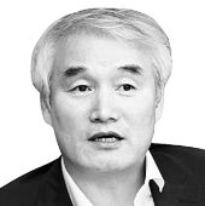How to vitalize the new unification doctrine
Published: 12 Sep. 2024, 19:42

Son Gi-woong
The author is the director of the Korea Institute for Peace and Cooperation.
Chuseok is the biggest holiday for the Korean people, wishing for a good harvest in autumn. But this year’s Chuseok is more heartbreaking for me than any other year. The Kim Jong-un regime in North Korea denied reunification itself based on its “two peoples, two countries” policy.
As North Korea came up with a bizarre theory, the fact that the two Koreas are the same people is denied — something I’ve never heard of before. Recently, North Korea sent an order to the pro-North Korean General Association of Korean Residents in Japan, banning activities or education that include the two Koreas, peaceful reunification and the Korean people.
In his Liberation Day speech on Aug. 15, President Yoon Suk Yeol announced the new Reunification Doctrine for all people in South and North Korea. That’s the opposite of the Kim regime. The core of the doctrine is the “three unification strategies.” The emphasis on the role of North Koreans is very different from that of the past administrations.
It’s not the kind of intentional or coercive absorption. It is aimed at achieving peaceful reunification in which the people of the two Koreas choose their own system through a free and peaceful process. That’s a unification based on the “right to the self-determination of the people” jointly made with the North Koreans. This is the core of the “National Community Unification Plan,” the official unification plan of South Korea.
That’s the biggest reason for the Kim regime to deny the homogeneity of the two Koreas. The intention is not to accept the unification of the bisected peninsula by exercising the right to self-determination. The regime wants to deprive the North Korean people of their rights to speak out and decide on unification. At the same time, the Kim Jong-un regime is trying to eliminate the justification for South Korea to claim the exercise of the right to self-determination on unification. North Korea’s intention is to fundamentally deprive South Korea of the grounds for its argument that North Koreans should be given an opportunity to exercise their right to self-determination.
No matter what sophistry the Kim regime concocts, the fact that the Korean people are the same cannot be changed. President Yoon and the government must make it clear that all South and North Koreans living on the peninsula are of the same people and that unification means the reunification of the national community based on the exercise of the right to self-determination.
Otherwise, North Korean residents may hesitate to play the “role required of them” in unification. It is also difficult to win active support from the international community for the legitimacy and justification of unification. From this perspective, I think it was inappropriate that President Yoon didn’t mention the “national community unification plan” and never used the expression “national” while presenting the unification doctrine.
President Yoon proposed three ways — human rights, contacts and exchanges and humanitarian assistance — to open the eyes and ears of the North Korean people and move toward a free, democratic and peaceful reunification. In the case of human rights, the Kim regime thinks that if the leftist party, which focuses on improving inter-Korean relations, takes power, voices to improve human rights will subside. That’s why the Kim regime doesn’t listen to the Yoon administration’s complaints about the dire human rights conditions in the North.
The Kim Jong-un regime may accept humanitarian aid if the government clearly declares the separation of politics and economics and allows civilian groups to offer the aid autonomously. But the South Korean government cannot completely stay idle amid international sanctions against the North.
Despite the limits, the Yoon administration must have the will “to change North Korea through the change in the people of North Korea.” President Yoon was right when he proposed a working-level inter-Korean dialogue consultative body. Regardless of the response from the Kim regime, Yoon must always offer his hand under any circumstances to continue the proposal for the formation of a peaceful relationship. This also means that North Korean authorities are not excluded from the national community unification.
It suits the image of the president to strongly express his will for unification based on the Constitution. The president’s consistent, continuous and public expression in his own voice for Constitutional unification can be taken seriously by North Koreans.
The government must convey the will of the president to the North Korean people by any means possible. Even in the deadlocked inter-Korean relations, the government can be a powerful force to get closer to the hearts of North Koreans.
Translation by the Korea JoongAng Daily staff.










with the Korea JoongAng Daily
To write comments, please log in to one of the accounts.
Standards Board Policy (0/250자)